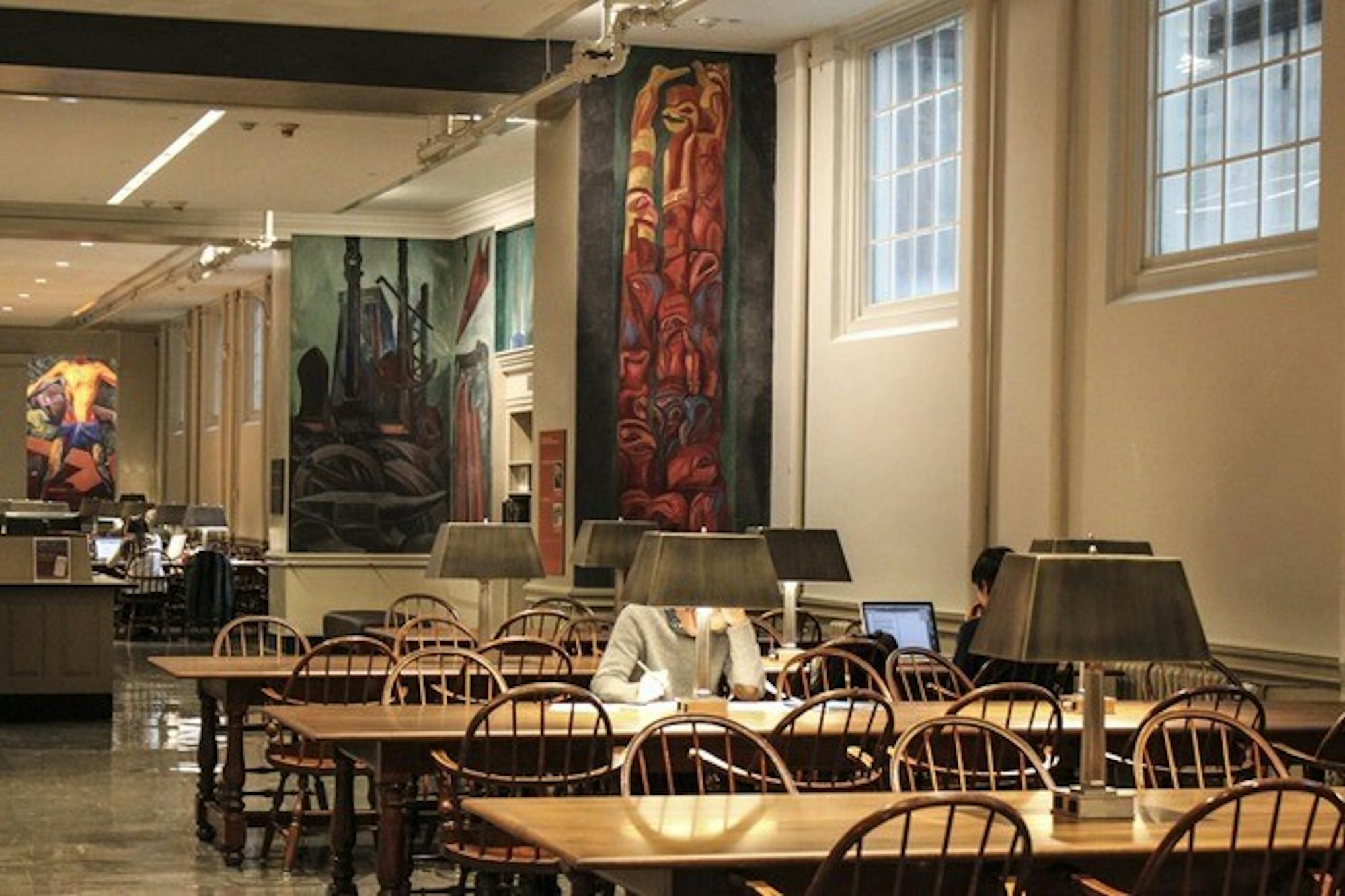Spanning over 3,000 feet of wall space, the murals created by Jose Clemente Orozco, titled "The Epic of American Civilization," depict harrowing scenes of war and torture, organized labor and ancient Aztecs, among others. Although many national historic landmarks have strong associations with significant events or turning points in the country's history, Orozco's murals approach history with a new perspective, challenging long-held conceptions Anglo-American development in America.
The National Historical Landmarks Program, which began in 1935 and is sponsored by the National Park Service, recognizes nationally significant historical places that posses exceptional value or quality in illustrating American heritage.
"Most of the time, this designation is given to some type of building or monument, so it is really impressive that a piece of art like the Orozco murals were chosen," Dean of Libraries Jeffrey Horrell said.
Known for his bold color use and evocative storytelling imagery, Orozco created the murals from 1932 to 1934 as the College's second artist-in-residence, with the support of then-President Ernest Hopkins. Late art history professors Artemas Packard and Churchill Lathrop invited Orozco to Dartmouth to teach a class on fresco mural technique. At the time, Orozco was a renowned Mexican muralist known for illustrating controversial themes in his art.
Art history professor Mary Coffey testified before the National Park's advisory board last fall in support of the landmark honor.
"Unlike other artists, his murals aren't full of slogans," Coffey said. "It tends to be trans-historical, which gives it a kind of resonance. In his epic, he creates a visual story that links the ancient to the modern in a continental rather than national way."
The National Park Service approached the College last fall about the mural's possible landmark designation, and by the winter many faculty members were working to make murals' historical landmark status possible, Horrell said.
National Park Service historians Roger Reed and Alexandra Lord prepared the proposal to make the murals a national landmark. The proposal and selection process involved the efforts of many faculty members, including Coffey.
The landmark designation will increase Dartmouth's prominence nationwide, Horrell said.
"We expect that there are a lot of interested people who will now make a point to see the murals and the College as well," he said.
The murals were not always appreciated, Coffey said. After the murals were completed in 1934, many argued the murals should be removed because of their controversial nature, she said.
"The College was always incredibly supportive of the murals and stood by them, despite the negative feelings from some alumni."
The murals reopened to the public in October 2012 after a four-month renovation of the Reserve Corridor, renamed the Orozco Room. Updates included the installation of a new lighting system to better display the works, as well as furniture and desk lamps.
Following the renovation and subsequent efforts to advocate for the murals' inclusion in the national registry of historic places, the Orozco murals became the 23rd national landmark in the state of New Hampshire and joined the 2,540 protected landmarks across the country. The murals are the only landmark to be housed or sponsored by a college or university this year.
The Orozco murals represent the National Park Service's larger initiative to recognize diversity in America's history, Coffey said. The murals will be added to the national registry, along with other landmarks including abolitionist Harriet Beecher Stowe's home in Connecticut and the Edmund Pettus Bridge, the site of "Bloody Sunday" during the civil rights movement.




